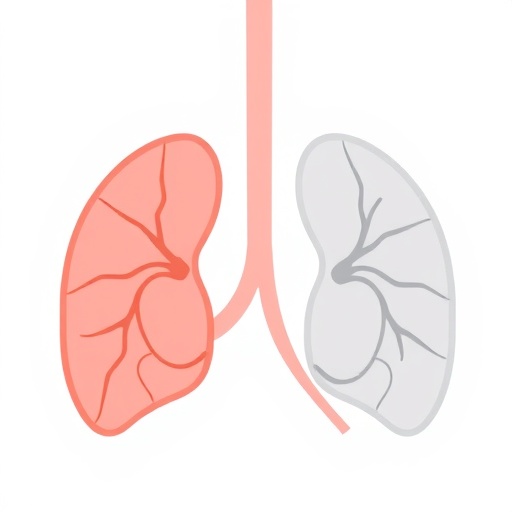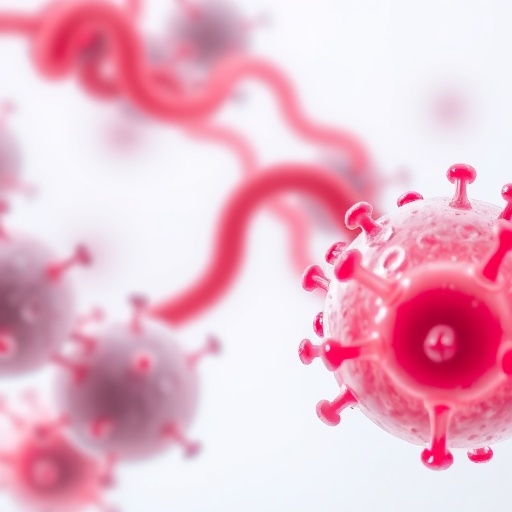A groundbreaking advance in cancer genomics has emerged from the ultradeep sequencing of normal human tissues, revealing a natural saturation mutagenesis phenomenon previously only partially understood through experimental methods. Traditional saturation mutagenesis involves the laboratory introduction of all possible mutations within a genomic element to decipher protein structure-function relationships, unravel mutation impacts in disease, and optimize targeted drug design. However, leveraging human tumours and normal tissues as “natural experiments” offers an unprecedented in vivo perspective into the full spectrum of somatic mutations occurring in genes associated with cancer.
Researchers have utilized duplex sequencing across roughly 400,000 haploid genomes derived from normal urothelium to investigate mutation distribution at the resolution of individual amino acid residues within protein-coding genes. Astonishingly, they detected mutations on 58% of the amino acid residues in the well-known tumour suppressor gene TP53, highlighting the depth to which natural mutagenesis saturates the genome of normal tissues. Unlike cancerous tissues, which typically harbor one or two driver mutations within a given gene due to clonal expansion, normal polyclonal tissues manifest multiple mutations spread across numerous clones, reflecting distinct selective pressures and mutation dynamics.
To extend this empirical observation, the team derived theoretical kinetic models that estimate the fraction of possible mutations expected to be seen as sequencing depth increases, assuming neutral mutagenesis shaped solely by trinucleotide context-dependent mutation rates. For TP53, purely neutral models projected that about 26% of all conceivable mutations could be observed in the current dataset, implying that to achieve full saturation—detecting every possible mutation—an accumulated sequencing depth on the order of ten million times coverage would be necessary. This illuminates the vast unexplored mutational landscape residing in seemingly normal tissues.
Crucially, the researchers found that natural mutagenesis deviates from the neutral baseline due to selective forces acting on mutations. Positive selection drives the enrichment of particular missense and truncating mutations in TP53, resulting in more mutations observed than predicted by neutral theory. In contrast, certain genes like FGFR3 are under negative selection within normal urothelium, evidenced by a slower accumulation of mutations than expected, signifying the complex evolutionary landscape of somatic variants even in non-cancerous contexts.
This natural saturation mutagenesis paradigm enables precise quantification of positive selection pressures down to individual amino acid residues and functional protein domains. In TP53, the p53 DNA-binding domain emerges as a hotspot of significant selection, corroborated by its structural involvement in DNA interaction and its prevalence in tumors. Mutations at these sites appear more frequently across diverse cancers, are recognized driver mutations, and exhibit deleterious functional effects validated by prior experimental assays. Intriguingly, these selected residues also tend to reside in protein regions buried away from solvent exposure, underscoring the structural vulnerabilities exploited by pathogenic variants.
Further domain-level analyses reveal that only specific TP53 domains, particularly the DNA-binding region, manifest statistically significant positive selection for missense mutations, whereas truncating mutation selection appears more evenly distributed along the gene. Similarly, cancer-associated genes EP300 and CREBBP show positive selection concentrated in their histone acetyltransferase (HAT-KAT11) domains. Conversely, tumor suppressors such as RBM10 and STAG2 predominantly accumulate truncating mutations, consistent with distinct mutational mechanisms governing their inactivation.
The natural saturation approach also illuminates less obvious selective signals, such as a single amino acid residue in FGFR3 (G380), which is positively selected in normal urothelium despite the gene’s broader background negative selection. This residue does not correspond to common hotspot mutations found in bladder cancer, indicating complex, gene- and tissue-specific selection landscapes that diverge from tumor evolution alone.
Beyond protein-coding regions, the study decisively advances understanding of regulatory mutagenesis by scrutinizing the TERT promoter, a non-coding region frequently mutated in cancer. Mutations with significant site selection in normal urothelium overlap with those recurrent in tumors and possess experimentally validated functional impact, thereby reinforcing the functional relevance of promoter mutations as drivers of clonal expansion and possibly malignant transformation.
By harnessing ultra-sensitive sequencing and natural clonal evolution, this research pioneers an in vivo saturation mutagenesis framework that directly links mutation incidence across human tissues to functional and evolutionary consequences. It offers a powerful complement to traditional experimental mutagenesis, enabling high-resolution mapping of mutation effects, positive and negative selection gradients, and the discovery of novel driver mutations in the pre-cancerous state. As normal tissue sampling and deep sequencing technologies advance, natural saturation mutagenesis promises to transform our molecular understanding of cancer initiation and progression.
This convergence of genomic depth, evolutionary biology, and structural protein insights creates transformative opportunities for precision oncology, biomarker development, and therapeutic targeting. By capturing the full landscape of somatic mutations operating under selection in human tissues, researchers can identify early driver events with unprecedented sensitivity, opening new avenues for cancer interception and prevention.
Natural saturation mutagenesis represents a paradigm shift in cancer genomics, revealing a nuanced picture of somatic mutation dynamics shaped by cellular context, tissue-specific selection, and molecular function. It challenges the conventional tumor-centric view, proposing that comprehensive mutational surveillance in normal tissues will unveil critical insights into the earliest steps of carcinogenesis. The unfolding narrative of somatic variation as a continuous, nuanced spectrum of mutational and selective forces is poised to redefine strategies in cancer biology and therapy development.
The study exemplifies a landmark step in leveraging normal tissue sequencing to capture the breadth and depth of mutational processes, highlighting sex- and smoking-related biases in mutation selection that further nuance the mutational landscape. Ultimately, this research foreshadows an era where natural experiments embedded within human tissues themselves guide the identification of driver mutations and the mechanisms governing oncogenic transformation.
Subject of Research: Natural saturation mutagenesis through ultradeep sequencing of normal human tissues to characterize the selection pressures and functional impact of somatic mutations in cancer-associated genes.
Article Title: Sex and smoking bias in the selection of somatic mutations in human bladder.
Article References:
Calvet, F., Blanco Martinez-Illescas, R., Muiños, F. et al. Sex and smoking bias in the selection of somatic mutations in human bladder. Nature (2025). https://doi.org/10.1038/s41586-025-09521-x
Image Credits: AI Generated
Tags: bladder cancer genomicscancer mutation dynamicsduplex sequencing technologyexperimental mutation analysisin vivo genomic studiesnatural saturation mutagenesispolyclonal tissue mutationsselective pressures in cancersomatic mutation patternstargeted drug design optimizationTP53 gene mutationsurothelium mutations





